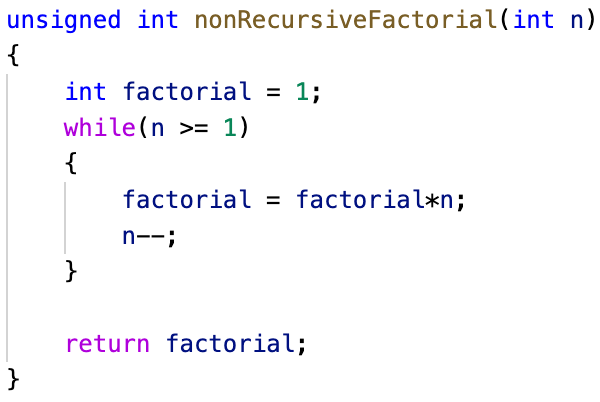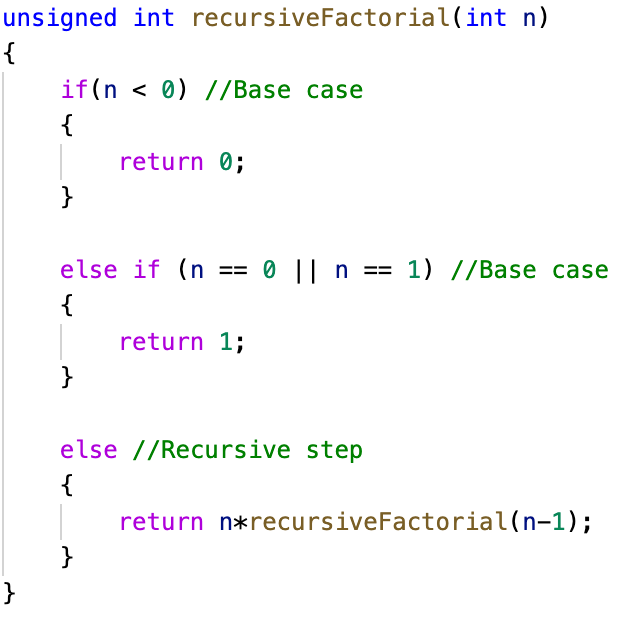Recursion
Recursion solves large problems by breaking a large problem into smaller problems, then combining the solutions to the smaller problems into one big solution.
How Recursion Works
Recursive algorithms have two steps:
- The base case
- The recursive step
The base case is the step that breaks out of a recursive loop. This step is a lot like the condition in a for loop or a while loop.
The recursive step is the part where the program solves a smaller version of the problem.
Factorial Example
Suppose we want a program that returns the factorial of an integer. We can implement this with or without recursion.
The program without recursion looks something like this:

Here, the factorial of n is calculated with a while loop. We initialize factorial to 1 so that we can multiply numbers to it inside the while loop. n is decremented each time the while loop runs, up until n equals 1.
The program with recursion looks like this:

Here, the first two if statements are the base case. It’s impossible to find the factorial of a negative number, so we want to make sure n is not negative. Otherwise the function would go haywire.
The second if statement makes sure that the function returns 1 when n equals zero or n equals one, since \(0!\) and \(1!\) both equal one.
The recursive step is inside the else statement. It multiplies n by the number that comes before n, all the way up until n equals one.
We can tell this is a recursive function because the function calls itself inside the function with a smaller version of the same problem.
More Resources
Below are some more resources to learn about recursion: